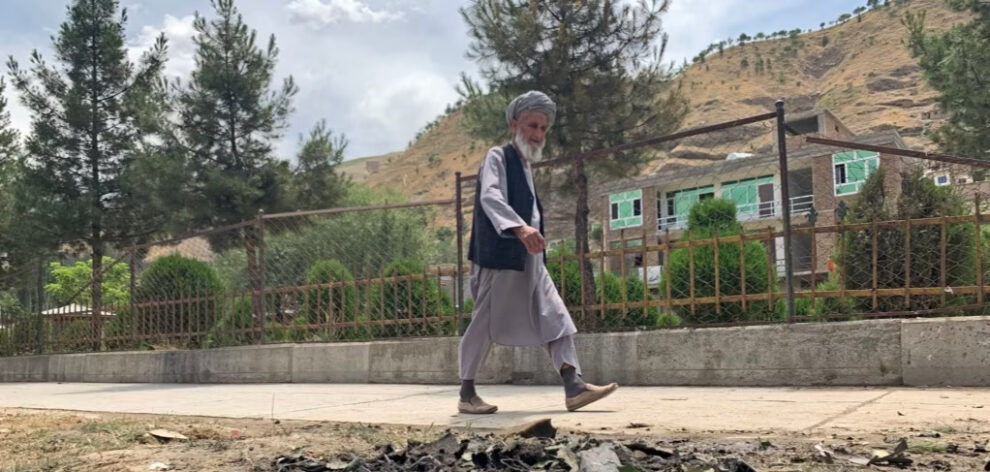Two years after the Taliban takeover of Afghanistan, there is growing consensus that the country is again devolving into a hotbed of terrorism activity that is already beginning to affect the region, if not yet capable of reaching the West.
Some of the more damning assessments have come from a United Nations sanctions monitoring team, which warned in a report in June that the Taliban “have not delivered on the counter-terrorism provisions” in the Doha Accords, the agreement that paved the way for the withdrawal of U.S. forces.
Instead, the report, based on U.N. member state intelligence, warned that “a range of terrorist groups have greater freedom of maneuver under the Taliban de facto authorities.”
The various groups “are making good use of this,” the report added. “The threat of terrorism is rising in both Afghanistan and the region.”
Some estimates put the number of terrorist groups in Afghanistan at about 20, and even some of Afghanistan’s neighbors have raised concerns.
Pakistan, for instance, has repeatedly pointed to a surge of terrorism-related deaths, many concentrated along its border with Afghanistan.
The Taliban have rejected such allegations.
Earlier this month, a Taliban official touted a ruling by supreme leader Hibatullah Akhundzada forbidding cross-border attacks on Pakistan.
Chief spokesman Zabihullah Mujahid went even further, telling VOA that Taliban fighters had essentially put an end to the terrorist threat in Afghanistan.
“Those found guilty of indulging in such activities will be brought to justice and punished in line with our legal system,” he said, saying the Islamic State terror group’s Afghan affiliate, known as IS-Khorasan or ISIS-K, had been “decimated” by Taliban counterterrorism operations.taliban-to-mark-august-15-victory-day-against
The Taliban have also gotten a public show of support from U.S. President Joe Biden, who caused a stir last month July when he indicated the Taliban had been true to their word.
“Remember what I said about Afghanistan? I said al-Qaida would not be there. I said it wouldn’t be there. I said we’d get help from the Taliban,” Biden said in response to a question about the frenzied U.S. withdrawal from Afghanistan.
“What’s happening now? What’s going on?” Biden said. “Read your press. I was right.”
A U.S. official who spoke to VOA on the condition of anonymity said Biden was referring in part to the Taliban’s role in killing the leader of the Islamic State terror cell that was behind an August 2021 bombing at Kabul airport. The attack killed 13 U.S. troops and about 170 Afghan civilians.
Other U.S. officials remain wary, though, pointing to long-term plans by both al-Qaida and IS-Khorasan, each of which has the intent, if not the capability, to attack U.S. and Western targets.
“Our intelligence is degraded,” the commander of U.S. Central Command, General Michael “Erik” Kurilla, told the Senate Armed Services Committee in March when asked about the military’s ability to track the two terror groups.
“I believe we can see the broad contours of an attack [plot],” he said. “Sometimes we lack the granularity to see the full picture.”
Some former officials wonder how long it will be before al-Qaida or IS-Khorasan is able to break through.
“Neither al-Qaida nor [IS] in Afghanistan currently has the capability to strike U.S. interests but I don’t agree we can assume that beyond the short term,” Edmund Fitton-Brown, a former senior U.N. counterterrorism official and sanctions monitoring team coordinator, said during a recent webinar hosted by the Washington-based Foundation for Defense of Democracies.
Other analysts have expressed similar concerns.
“Afghanistan seems eerily reminiscent to pre-9/11 Afghanistan, with the number of groups that are allegedly active,” said Colin Clarke, director of research at the global intelligence firm The Soufan Group.
“Terrorist groups thrive and indeed flourish amid instability. And that’s exactly what we have here,” he told VOA in June.
Here is a look at the Taliban and the major terrorist organizations now operating in Afghanistan, and how they have fared in the two years since U.S. and coalition forces left the country.
Source : VOA News















